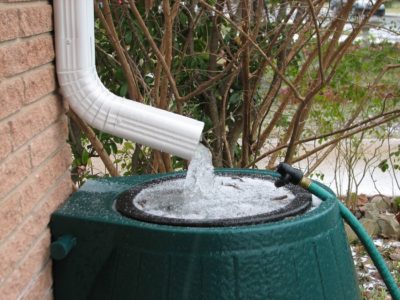 In a world of increasing instability, the world of self-sustainable living starts to look less like something out of an M. Night Shyamalan movie and more like something every person can and should be striving for.
In a world of increasing instability, the world of self-sustainable living starts to look less like something out of an M. Night Shyamalan movie and more like something every person can and should be striving for.
Now, don’t worry. This isn’t about stepping off the grid entirely, or living out in the woods with only your flint and wits. That’s varsity-level self-sustainability, and we’ll get there later.
The point is that self-sustainability is about living a life as free from outside tethers as possible, firstly for the simple freedom such a life offers and secondly for the security that self-sustainability holds in the face of disaster.
Here are five things to get you started on the road to self-sustainability this year:
1. Get rid of debt and learn to conserve
In our world of charging everything, crippling debt is commonplace. The buy-now-pay-later mantra has millions of people tied, seemingly irrecoverably, to credit card companies. If you want to be self-sufficient, you can’t have thousands of dollar of your assets tied up in debt. Save up a financial cushion for emergencies, and then begin eradicating your debt as quickly as you can. This isn’t just good self-sustainability; it’s good financial sense, too. Begin budgeting. Every home should have a budget, and learning to live within and beneath your means is a huge step toward living sustainably.
2. Reduce your waste
Learning to cut down on trash can be a process, especially as we live in a society that prizes high-convenience, low-durability products. Everything (we’re told) can be thrown away. Not only that, but we have lost the arts of mending and repurposing. The broken is no longer something to fixed but something to be thrown away.
New “Power Buddy” Provides Instant Backup Electrical Power In A Convenient, Portable Briefcase
Learning to mend, to repurpose, and to reduce your use of disposable products is frugal (See Step 1) and also can lead to a better quality of life. This can be as simple as buying and using reusable grocery bags, patching those old jeans instead of throwing them away, or building new toys out of scrap wood that would otherwise go to waste.
3. Start a garden
This one almost goes without saying. Depending on yourself for the food you eat is the hallmark of self-sustainable living. With the right research, a home garden can be simple and easy to take care of, while providing your table with fresh produce throughout the growing seasons. While most produce will need to be replanted every year, there are some edible perennials out there that make a great, easy addition to any garden.
Things like asparagus, strawberries, blueberries, and even some varieties of broccoli are perennial and will continue to bloom year after year. Even if you don’t have space for a full garden, most produce can be successfully grown in a pot, and tiny herb gardens need little more than a windowsill to bloom beautifully.
4. Collect rain
Have you ever watched the rain come down in sheets, and then turned on your faucet and realized the irony of it all? Water pours out of the sky for free, and yet we still pay the water company to pipe it into our houses. About $50 and a weekend’s worth of work can give you a respectable rain barrel. The water you collect can be used to water your garden or pets, wash cars, or even fill your toilets.
5. Start an emergency stash
You don’t need to have a year’s worth of food stockpiled away to be prepared for an emergency. Organizations like FEMA recommend having at least three day’s worth of supplies, but it is not a bad idea to have enough supplies on hand for a week or two. The good news: This doesn’t have to be expensive. Watch your grocery store for deals and stock up on bottled water, non-perishables, and other emergency supplies.
The beauty of self-sustainability is that it fits so perfectly into almost any lifestyle. Everyone can do little things to make their lives a little more independent and free.
What steps would you add to this list? Share your thoughts in the section below:
 Off The Grid News Better Ideas For Off The Grid Living
Off The Grid News Better Ideas For Off The Grid Living




